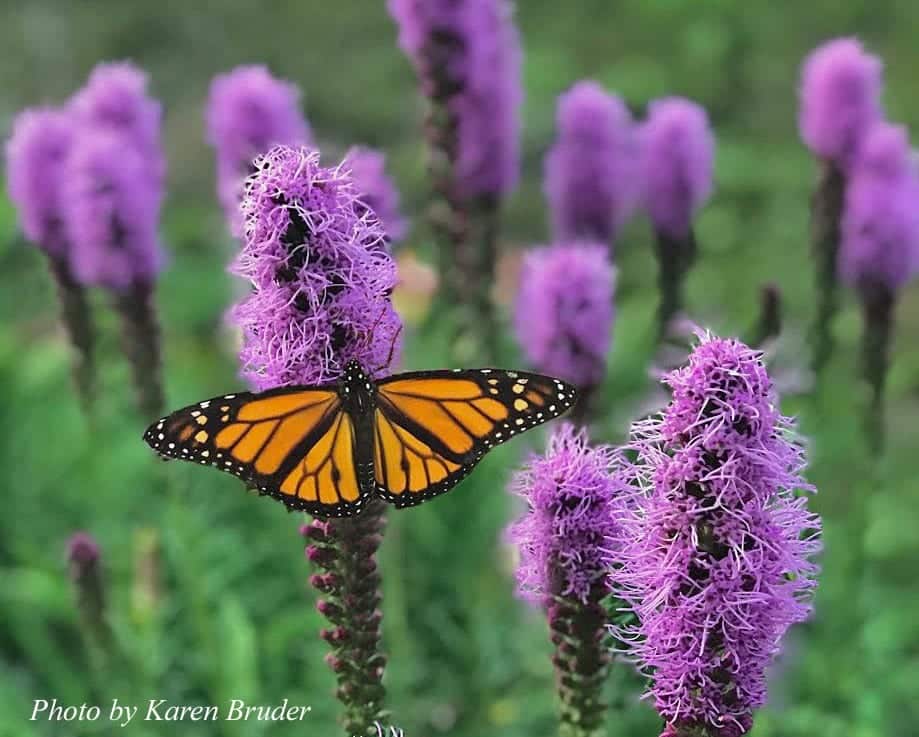
Maine Audubon regularly features posts by guest writers, including graudates of the Maine Master Naturalist Program – in our Maine’s Naturalist series. If you’d like to explore contributing a post, send an email to outreach@maineaudubon.org. Today’s blog post is by Maine Master Naturalist Karen Lessard Bruder.
They’re back! The recolonization of Maine has begun. Monarch butterflies (Danaus plexippus) are being sighted along the coast from Kennebunk to Blue Hill and as far inland as Hartland and Strong.
I have eagerly awaited this annual migration since my childhood. I vividly remember receiving the August 1976 edition of National Geographic, cover adorned with butterflies detailing the discovery of the overwintering forests in the Mountains of Mexico. This was the first year I reared my own from caterpillar to adult.
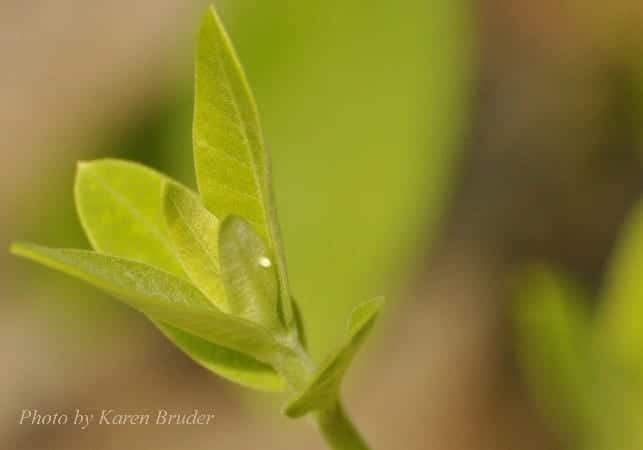
While the Monarch butterflies being seen now will only live from 2 to six weeks, their offspring, like those of this mating pair spotted in Freeport on June 19, will likely be the generation that will migrate thousands of miles south back to Mexico and live for 6 to 9 months. They are the ones who will start this cycle over again in March of next year. After mating, the female locates a suitable host plant; one in the Asclepias family, also known as “milkweed.”
She will lay 300-500 eggs in her lifetime; each one, a yellowish-white, football-shaped egg carefully glued most commonly on the underside of young, tender leaves. However when you can’t see your ovipositor at the end of your abdomen, placement can go awry. I have found eggs on these Asclepias tuberosa buds, on milkweed stems as well as on milkweed flowers.
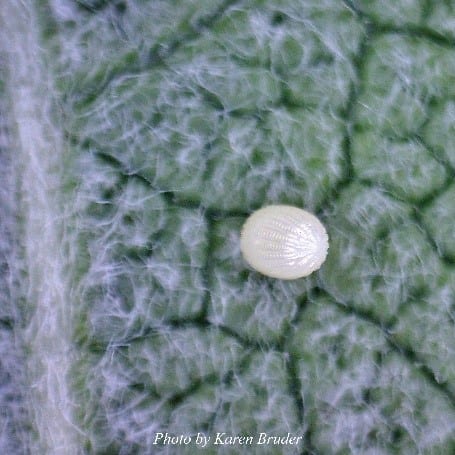
3-5 days later a tiny, very hungry caterpillar emerges. Its first meal; its eggshell. Throughout its life, the caterpillar will grow rapidly and molt several times. After the first molt, it begins to get its stripes and its antennae can begin to be seen giving it a more typical monarch caterpillar look.
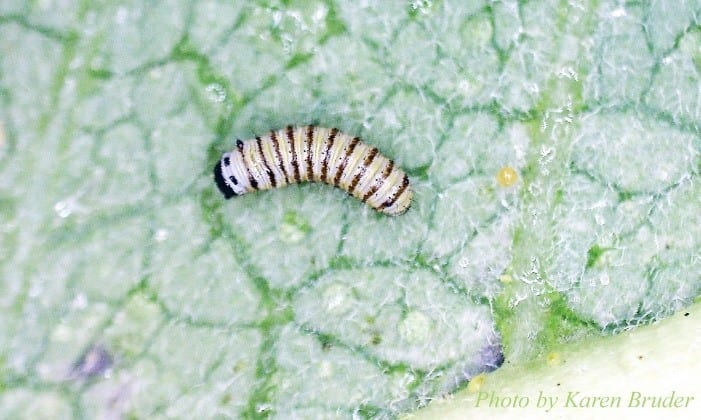
Under normal summer conditions, it takes from 9 to 14 days to complete the larval stage of development. The caterpillars only job during this time is to eat and avoid predators. If all works out in the caterpillar’s favor, (less than 10% will reach maturity) it will have increased in mass by 2,000 times its original size by the time it becomes a pupa. Over the next 10-14 days the Monarch continues to develop inside the pupa. Right from the start of this stage, it has a plan. Each body part is already defined, awaiting the perfect time eclose (butterfly terminology for “emerge”) and reveal itself as an adult butterfly.
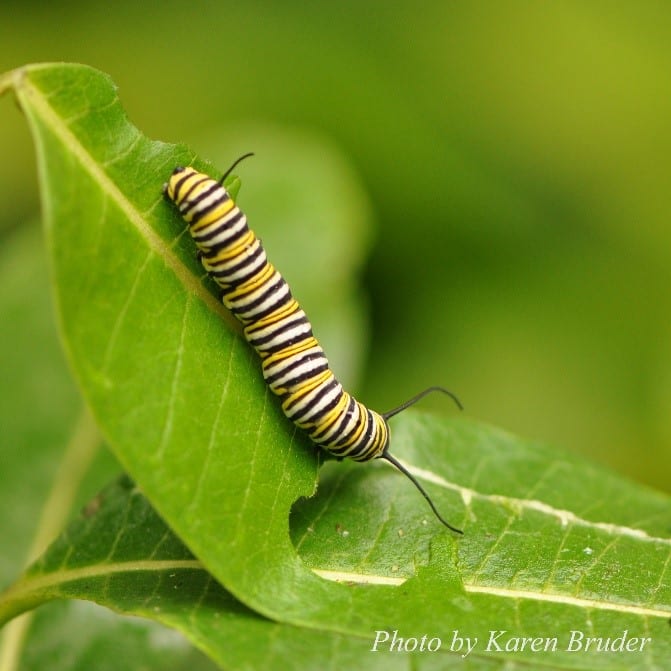
I hope you will find time this summer to observe this process and enjoy this annual reminder of just how amazing the natural world is. Take a walk in the milkweed before summer’s end see the mystery of the Monarch reveal itself to you. Like me, you just might find yourself ‘catching the bug’ and becoming passionate about saving this one.
